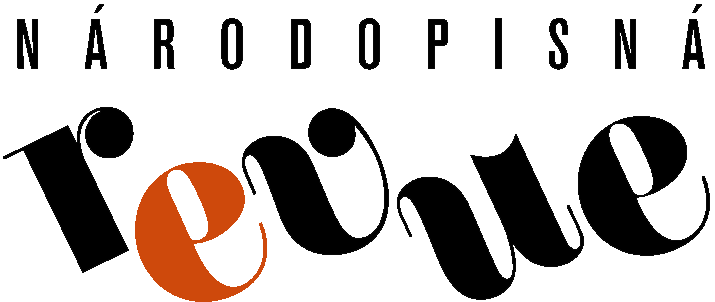Journal of Ethnology 4/2011 is devoted to the theme Christmas and the present. In her study, Alena Křížová submits a clearly arranged development of the phenomenon Christmas tree and its decoration (Two centuries with “Christ’s Tree”). Marta Ulrychová and Šárka Ladýřová pay attention to the contemporary customary tradition relating to St. Lucy’s Day (Rounds on St. Lucy’s Day in the Bohemian Forest region); Ludmila Tarcalová presents the origin and development of so-called living Nativity Scenes in Moravia (Living Nativity Scene - a new phenomenon of the present). Other Studies and Materials column publishes the personal memories of Christmas in German families that were forcibly expelled from the Czech territory after the World War II (author Ulrike Zischka), the field material of the research on the Slovácko dance verbuňk spread outside the region of Slovácko (Moravian Slovakia) (author Jarmila Vrtalová) and the contribution of the use of clay in folk architecture (author Martin Novotný).
Transferring Tradition column presents the story of Nativity scene maker Siegfried Zabel, a German compulsorily transferred from Šluknov (author Eva Habel). Other regular columns pay attention to the reports from conferences, exhibitions, festivals and shows, the reviews of new books and other branch activities.
Two centuries with Christ’s Tree
The contribution speaks about the visual and aesthetical form of the Christmas tree from its beginnings until the early modern ages – from the 19th century until now in the Czech environment. It pays attention to the Christmas tree function within the burgher society, where it played a social and representative role and to its importance for the army, where it became a symbol and reminder of family. The species selection was conditioned upon the geographical and climatic conditions – besides traditional coniferous trees (fir, spruce, pine) even other evergreen trees (box tree, holly) occurred. Until the mid-19th century, the trees were decorated with various kinds of foods, delicacies and fruits (biscuits, gingerbread, dates, figs, apples) and small toys, too. Since the mid-19th century, the production of glass, cardboard and metal sheet Christmas ornaments began to develop in the Saxon towns. Fifty years later in came to the Czech Lands as well. Chocolate figures, available in Christmas selection boxes soon, were a new phenomenon of the same time. Christmas lighting created an important part of the tree decoration – first were used oil lamps, wax, grease or paraffin candles; since the 1930s, electric lights were sold. Even if the ornaments underwent fashion changes within the entire 20th century, the Christmas tree decoration is understood as a very traditional matter, which is not subject of actual trends, as results from a three-generation survey by questionnaire done with 183 respondents from the families of students of Faculty of Arts, Masaryk University, and from the families of teachers of Agronomical Faculty, Mendel University in Brno.
Rounds on St. Lucy’s Day in the Český les region
The essay speaks about the rounds on 12 December – on the eve of St. Lucy’s Day. It is based on the field research running in three villages (Svatá Máří, Zdíkovec and Zálesí), which are located in the southern part of the Bohemian Forest region, District of Prachatice, between 2007 and 2011. Simultaneously, it summarizes the reports about the rounds from the 1980s, i.e. from the period when the participating women did not present this tradition intentionally. We also took into account the information published at the beginning of the 20th century in journal “Český lid“. Based on comparing the forms of rounds recorded in different time levels, the authors came to the hypothesis about a possible influence of Jesuit priest Vojtěch Chanovský (1581-1643) who was sent out to do missionary work in his native region and to improve the morals in spin evenings, inter alia. The presence of a Black Lucy who says the prayers and acts as a leading person, dominating over other White Lucys, and the accompanying song with a text of educational and moralistic character and a tune, which follows the song funds of the mentioned region, seem to be the typical features of the rounds in the entire area of the Bohemian Forests.
Living Nativity Scene - a New Phenomenon of the Presence (Selected Examples from Moravia)
The depiction of the birth of Jesus as described in Bible has become an actual Christmas event for many villages and towns since the mid-1990s. In Moravia, one can find more forms among them especially the so-called Living Nativity Scene with performing parishioners representing the Holy Family stands out. The actors and the audience take part in the Christmas secret: the village is becoming Bethlehem temporarily and the people go together to the crib. For the authors, it is an occasion to create a play with songs and scenes. The origin and development of contemporary living nativity scenes was researched in the region of Moravian Slovakia – in the areas round Uherské radiště, Uherský Brod, and Strážnice, where the living nativity scenes in the open air have been performed since 1994. Questionnaires, video-records, and Internet reports have been completed with new forms of living nativity scenes in selected locations in Moravia: living nativity scenes in closed rooms, Christmas carolling at cribs, in churches, at Christmas trees and stage performances with Christmas habits. The study submits proofs of contemporary living character of Christmas plays in specific forms of the local culture.
Christmas – Two Worlds of a Holiday which is One and Only. Christmas Reminiscences between Bohemia and Bavaria
It was a chat between the author and her Moravian friend about their childhood that gave rise to writing these Christmas impressions from “two Christmas worlds”. The parents of both ladies might have equipped their children for life with the same customs, habits, things, fashion, and style of life. In the first case, they continued being lived in Moravia; in the other case they were moved from the region of Cheb in western Bohemia to Bavaria. The behaviour of both ladies was nearly identical or similar in many day-to-day small and big behaviour models, in the “styles of surviving” after the war. The author discovered she could share more things with her Moravian friend than with those in Bavaria. It was the parents who reminded both ladies of Christmas before 1945; things, letters and photos continue in acting as reminders thereof. The author’s Christmas world began in Bohemia. Christmas influences the in-war-born children and the refugees´ or expatriates´ children in a special way. Their experiences, memories and tales listened to at Christmas and in the course of it will be kept in their minds for all their lives. They always carry two Christmas worlds with them. The one represents that narrated and the parents´ memories, the other one means own experiences in after-war Germany. Christmas “there at home in Bohemia” and Christmas in “their new homeland in Bavaria” – childhood days in the late 1940s and the 1950s modified the life style and the tradition brought from Bohemia into an interesting mixture this contribution wishes to talk about.
The Value of Moravian-Slovakian Verbuňk Expansion to Moravské Knínice, Brno Region
The study is focused on the presentation of results from the first stage of a field research aimed at the expansion of the men’s dance "Moravian-Slovakian verbuňk” in the village of Moravské Knínice in the Brno Region. It pays attention to the cultural and social development in the mentioned area from the mid-19th century until the presence. This development provided the conditions to take over some cultural features (folk costumes, folk songs and dances, dialect) that originally occurred solely in the territory of the ethnographic area of Moravian Slovakia (Slovácko). The verbuňk dance can be seen for almost twenty years in the village of Moravské Knínice, whereby its form has been undergoing changes whose course and value the author records. She describes also the changes in Feast tradition, dance sequence, and musical accompaniment at Feast dance parties from the early 20th century until now. The contribution mentions the role of the National Institute of Folk Culture in Strážnice as a guarantor of research, documentary, educational, popularizing, and promoting activities related to Moravian-Slovakian verbuňk as a cultural phenomenon. The mentioned research results are a starting point for the next suggested field research works and audio-visual documentation of the occurrence and expansion of Moravian-Slovakian verbuňk in the Brno Region, which will be implemented in the coming years.
Clay in Constructions of the Pannonian-type House
The study speaks about clay buildings in the areas along the Morava River and in the central Danube basin. It explains some archaeological finds, searching for their ethnological analogies. The building techniques using clay are analyzed in a more thorough way while their genetic context is observed. The hitherto oldest discovered technique in clay wall construction in the researched region presents a wheel structure of an Eneolithic building with weave walls roughcast with a thick layer of pugging stuff on both sides. According to some authors, this concerns the original constructional solution from which the basic building techniques for unburned clay used in load-bearing masonry developed. The first one is the technique of so-called ramming whose origin might be in the wheel construction provided with two parallel “fences”. In accordance with this contention, we suppose the basis of the aforementioned way may consists in a clay mixture rammed into free space between a double-wall made from stones or palisade. Another construction is represented by building in layers that replaced the weave parts with clay material put on in layers, which - similarly to weave - had no supporting function. Moreover, the study describes constructions made from different types of so-called “války”. The last mentioned type of constructions describes the masonry with unburnt bricks, which are put dry on clay mortar – in contrast to the aforementioned building techniques working with wet material that dries in the masonry. The use of wet clay seems to be limiting - in the sense of technical possibilities. On the contrary, building use of bricks, i.e. exactly shaped construction materials, offers a higher number of options for the final use in a construction.



